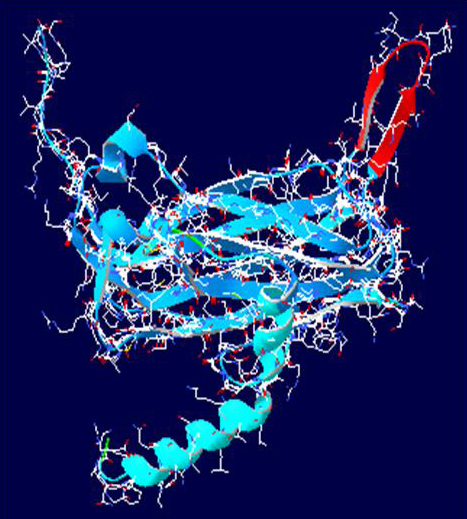My contact is an algorithmic programmer at an wealth management firm in downtown Chicago, the firm managing somewhere in the neighborhood of seven billion dollars. I spoke to him via email, this morning. He was in the "hole", as he called it, as he is most of the time. His name and company are withheld, to keep from violating his non-disclosure agreements. I'll call him Al.
Adam: Tell us where you are right now.
Al: I'm in a small room, approximately ten feet by twenty. There are no windows. It's lit by several lamps. Pretty nicely furnished. Big flat screen TV, comfortable chairs. I'm at a long desk, with five computer monitors. Most of the rest of the space is taken up by the server racks. The room is fairly cold, what with the climate control. We call it the hole, because after spending twelve hours or more in it and coming out, the light can be, well, shocking.
Adam: What is it that you do there?
 Al: I design the algorithms that control our trading programs, and watch them function. In other firms, I'm known as a "quant", or a "cruncher". We run our algorithms differently than many firms though; rather than simply doing quantitative analysis of trading markets, we guide our trades by a method we call "fractal market distribution".
Al: I design the algorithms that control our trading programs, and watch them function. In other firms, I'm known as a "quant", or a "cruncher". We run our algorithms differently than many firms though; rather than simply doing quantitative analysis of trading markets, we guide our trades by a method we call "fractal market distribution".Adam: What is fractal market distribution?
Al: Exactly what it says. We distribute our market interests according to fractals.
Adam: Like the well-known patterns, Mandlebrot and Julia sets?
Al: Not those algorithms, but it is essentially the same. Those well-known fractals are graphs of particular algorithms on an imaginary number axis, and zooming in on a particular area. We aren't making a visual pattern, but governing our trading behavior according to the described dimensions of an algorithm.
Adam: How does this differ from the algorithmic trading most firms do?
Al: Most firms take the movement of the markets as the dimensions which their algorithms seek to describe. They analyze the quantitative data of the market in the attempt to predict the market, or at least make trades that make sense according to the data of the market. Our algorithms don't come from quantitative analysis, at least originally. Though of course, we have to find a place of correlation between our algorithms and the market in order to design the trades.
Adam: What do you base your algorithms on, if not market data?
Al: Pretty much any sort of naturally-described motion. Anything that can have data collected on it. Thermodynamics. Virus replication. Quantum physics. The weather patterns. Auto traffic models.
Adam: You make trades based on the weather?
 Al: Well, it sounds that way, but not really. Any of these natural phenomena can be described, though not perfectly, with algorithmic modeling. I work with a guy at Cal Tech who specializes in these sorts of complex mathematical models. I take these models that he defines, and then interpret them, finding how they correlate to market data. They aren't microcosms of the market--but generalized patterns of natural motion tend to have corrolaries in other parts of the natural world. Hurricanes don't match market crashes, but pressure shifts on a certain day might be similar to currency fluctuations. The skill is in finding what to apply the algorithm to, and to have the fortitude to see the experiment through.
Al: Well, it sounds that way, but not really. Any of these natural phenomena can be described, though not perfectly, with algorithmic modeling. I work with a guy at Cal Tech who specializes in these sorts of complex mathematical models. I take these models that he defines, and then interpret them, finding how they correlate to market data. They aren't microcosms of the market--but generalized patterns of natural motion tend to have corrolaries in other parts of the natural world. Hurricanes don't match market crashes, but pressure shifts on a certain day might be similar to currency fluctuations. The skill is in finding what to apply the algorithm to, and to have the fortitude to see the experiment through.Adam: And it is successful?
Al: Largely, yes. We tend to do consistently 35% over any particular market in which we do business. This Thursday, we earned 15% on the market crash. In one day. We were using an algorithm based and inspired by bee movement.
Adam: You're referring to Thursday, May 6th, when the Dow had the biggest intraday loss in history, losing over 1000 points before rebounding. You say you made 15% on a single day? Using bees?
 Al: Bees are a social entity. Their motion, both in their hives and in their environment, are based upon what are basically social cues, in an insect society. Any sort of panic is a social phenomenon. By studying one, which is easily mappable, you can make conjectures on another. We had an algorithm in place, and it paid off. The computer bought low, and sold higher.
Al: Bees are a social entity. Their motion, both in their hives and in their environment, are based upon what are basically social cues, in an insect society. Any sort of panic is a social phenomenon. By studying one, which is easily mappable, you can make conjectures on another. We had an algorithm in place, and it paid off. The computer bought low, and sold higher.Adam: There is speculation that computer algorithms caused the crash. But you made money on it. Is this moral? Illegal?
Al: Well, I don't know about the morality of it. But most traders use algorithms based on data they've collected, and judgments they've made. They're using math, but their math is still a function of their larger social pattern as human beings. By looking at their algorithms as part of the data, we map them as well. We can guess what their algorithms will do, and when they might pull the plug. Then we can benefit.
Adam: So is this legal?
Al: It's not illegal. The SEC is investigating algorithmic trading, supposedly. But it's just another way of making a decision. Whether it's flipping a coin, or using a multi-processor computer, it's just another tool to make a trade. Maybe they'll try and limit the speed of the trading, to keep it from snowballing. But there is so much money, and so many trades, a panic, or glitch, or whatever you want to call it is impossible to avoid entirely. It's a market. It's a system, and that's how the system works.
Adam: How did you discover this method? Just sitting in front of the computer, trying things until it worked?
Al: The Cal Tech professor and I were working on a project with robots.
Adam: Okay, robots? How are robots related?
Al: There were a bunch of autonomous insect-like robots, programmed to get to the highest point of a terrain. They learned to climb onto each other, to get higher up. They were physically designed to be able to climb each other, but they were not preprogrammed to do so. The key to the programming was that they were not forced to hurry as fast as possible, or they would tumble off of each other as they each tried to climb. Their time axis was extended, so as long as at some point during the experiment, they reached the highest part of the room, they would be considered to have succeeded their programming. They waiting for the opportunity, basically taking turns, and did much better than they would have done if they moved all at the same time.
We figured we were the robots--rather than try and force the our market strategy to succeed at once, we extend our T axis, and keep our various algorithms going. At some point, the opportunity for a natural motion pattern to succeed will make itself available. We don't need to worry about the odds of a crash, or the odds of a sudden sky-rocket. Capital shifts like the robots, and time is irrelevant. We just need to wait with our algorithms, until we can get a leg up, and then we can climb to the top.
Adam: You realize this sounds like a crazy, sci-fi hippie scheme?
Al: Well, we don't really go into a room of quants, mathematicians, drug users, sci-fi authors, or anyone else, and claim to understand the fabric of the universe. We don't. We just found a system, and stick with it, that seems to work. Other people have other systems, and they work. Investment groups hire tons of skilled traders, and that system works for them. This is our system.
Adam: So what other algorithms are you working on?
Al: I'm excited about one based on data collected from Google News. The way interest builds on certain topics, and they become "media headlines", so to speak. The ratios at which they collect, and at what levels they spike, we've found to be significant. We're also been looking into how oil spreads on water, studying data from the BP oil spill. The interaction of large masses of two homogenous, yet different fluids is very interesting. We've also been looking at sex.
Adam: Tell us more about sex.
 Al: Watching how singles of various standardized rated levels of attractiveness, among a particular sub-culture, interact over the course of a night at a bar. The conversations, the pairings, and who leaves with whom. If you quantify it, basically you get a hierarchical choice tree. If you rate attractiveness on a level of one to ten, you have a base-ten selection algorithm.
Al: Watching how singles of various standardized rated levels of attractiveness, among a particular sub-culture, interact over the course of a night at a bar. The conversations, the pairings, and who leaves with whom. If you quantify it, basically you get a hierarchical choice tree. If you rate attractiveness on a level of one to ten, you have a base-ten selection algorithm.Adam: So you expect people to believe you pretty much make money off Google News?
Al: We don't make money off the news--we make money of the fact of the social existence of news. The same "fact" of people publishing and reading and linking to news is the same fact of buying and selling on the market. That's what makes us money. The market isn't a free market, a state market, an investment market, or any of that. It's just a market--a series of relationships. People buy and sell things as part of society, and what we do is just the mathematical extension. You don't have to believe anything anymore, but regardless of what you do, people will make decisions, and either succeed, or not.
Adam: Anything algorithms based on Twitter?
Al: We tried to model Twitter Trends and re-tweets via the API firehose, but the data just wasn't very interesting. Mostly second-order algorithms. The key is finding something that is complicated enough that it makes a pattern that isn't inherently obvious. Then, you can match it to market data, and find things that improve upon just straight guessing, or market models.
Adam: Any plans for the future with this theory? Or just keep at it?
Al: I'll just keep making money, I guess. It's too bad that we put so much capital into, basically, a mathematics exercise. We can't really apply this to anything else. You can get 35% over market with trading, but what's the point of getting 35% over, say, human movement at a rock concert, or 35% over random chemical reactions? There's only a payoff for beating randomness in the financial markets.



No comments:
Post a Comment